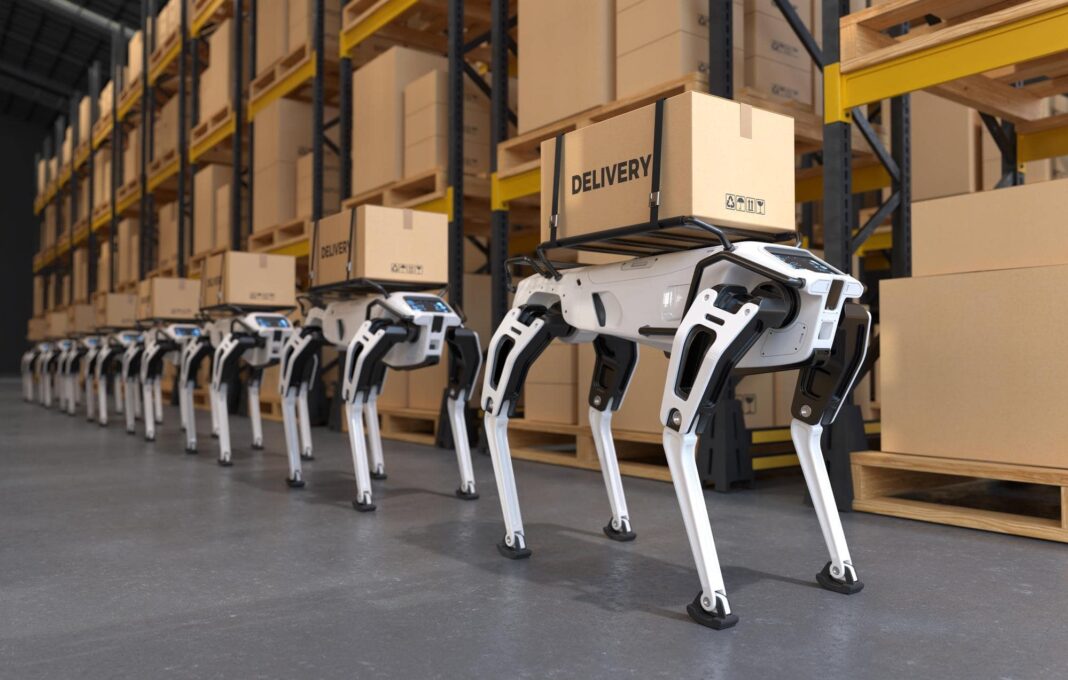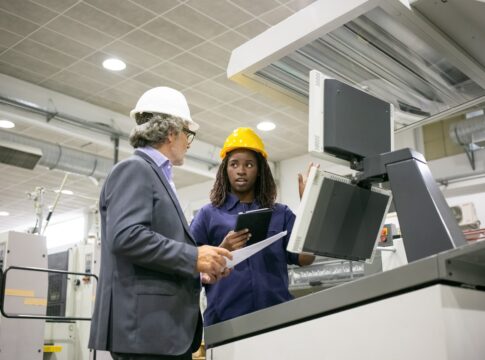Collaborative robots, often referred to as cobots, are designed to work alongside humans in manufacturing settings, facilitating human-machine collaboration and interaction. Unlike traditional industrial robots, cobots are designed to be safe and flexible, enabling them to perform tasks in close proximity to humans without the need for safety barriers.
The main advantage of cobots is their ability to collaborate with human workers, augmenting their capabilities and enhancing overall productivity. Cobots are designed to assist humans in various manufacturing tasks, such as assembly, pick-and-place operations, quality control, and material handling. They can perform repetitive or physically demanding tasks, relieving human workers from monotonous work and reducing the risk of ergonomic injuries.
Cobots are equipped with advanced safety features to ensure safe interaction with humans. These safety features include force and torque sensors, proximity sensors, and vision systems that allow them to detect and respond to human presence or unexpected obstacles. If a collision or abnormal situation is detected, cobots can stop or slow down their movements to prevent harm to humans.
Another key characteristic of cobots is their ease of use and programming. Unlike traditional industrial robots that typically require specialized programming skills, cobots are designed to be user-friendly and easily programmable. They can be programmed through intuitive interfaces, enabling even non-technical users to teach cobots new tasks or reprogram them for different applications. This flexibility allows for quick deployment and adaptation to changing production needs.
The collaborative nature of cobots also enables efficient human-machine interaction and collaboration on the factory floor. Cobots can be programmed to perform precise movements or delicate tasks that require human dexterity, while humans provide higher-level decision-making, oversight, and problem-solving capabilities. This combination of human expertise and robotic precision enhances overall productivity and quality in manufacturing processes.
Moreover, cobots enable small and medium-sized enterprises (SMEs) to automate their production processes without significant infrastructure modifications or high costs. Cobots are often lightweight, compact, and can be easily integrated into existing production lines or workstations. This makes automation more accessible and affordable for SMEs, allowing them to compete in a rapidly changing manufacturing landscape.
While cobots offer numerous benefits, there are considerations to ensure their effective and safe implementation. Proper risk assessments, training, and collaboration between humans and cobots are crucial. It is essential to define clear roles, establish safety protocols, and provide appropriate training to workers to ensure they understand how to work safely with cobots.
In summary, collaborative robots, or cobots, enable human-machine collaboration in manufacturing. They assist human workers in various tasks, enhance productivity, and reduce the risk of injuries. Cobots are designed to be safe, flexible, and easily programmable, allowing for efficient human-machine interaction and adaptation to changing production needs. Their deployment benefits not only large manufacturers but also SMEs, making automation more accessible. Careful consideration of safety protocols and worker training is essential to ensure the effective and safe implementation of cobots.








